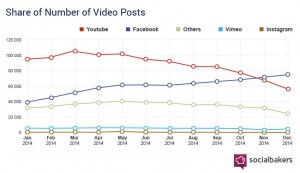It costs a lot to acquire a new customer, but unfortunately for marketers, most will make a single purchase and never return to make another. Cultivating a repeat customer, on the other hand, costs far less than acquiring a new customer. In fact, it costs between five and twenty-five times less. If a marketer thinks their job is done once the customer reaches the purchase phase, then they are missing a huge opportunity to attract customers back again and again. But how should marketers capitalize on this retention opportunity?
Personalized and relevant marketing strategies hold the answer. We all know personalized marketing is important for attracting new customers to an e-commerce site or a brick-and-mortar store, but it can also have significant impact on customer retention. How significant? According to Invesp, 56% of online shoppers are more likely to return to a site that offers personalized recommendations.
If marketers take the step to leverage behavioral data and analyze consumers’ browsing and purchase patterns to provide tailored product recommendations, then brands can create a total, 360° experience that truly fosters brand loyalty.
If businesses embrace personalization through every part of the customer journey, brands of all shapes and sizes can see very high customer retention rates as a result. For example, retailers like Amazon, which uses personalized marketing extensively through product recommendations, personalized email marketing, and killer SEO strategies, continue to see high customer approval and retention rates despite their extraordinarily high order rate (receiving and processing over 35 orders worldwide per second). The results? 96% of Amazon customers who subscribed to the Amazon Prime service for two years, will renew for a third year.
How can giant e-commerce companies continuously manage personalization on that level? Using automation platforms to send follow up-messages, such as thanking customers for their purchase or offering a discount on a future purchase, is a great start. But these same automated marketing platforms can personalize the customer journey even further, by looking up a customer’s most recent behavioral data in their profile, enriched by the inclusion of website activity such as browsing and shopping.
Marketers can adopt a retention strategy, fostering better customer retention rates by utilizing personalized marketing to encourage or incentivize existing customers to return and shop again. For instance, if a shopper puts an item in a shopping cart but doesn’t go through to purchase the item, an automation platform not only triggers an abandoned cart email, but usually includes additional items that may be of interest. Personalized emails improve click-through rates by 14%, and conversion rates by 10%.
By receiving this relevant content in a timely, consistent, and personalized manner, the customer feels less like a simple sales target and more like an individual. If a customer purchases a dress through a brick-and-mortar store, then receives a targeted discount offer for similar dresses via mobile app or social channel, they are being served up a truly individualized omnichannel experience.
Taking a predictive approach based on the data that automation platforms collect from the multiple channels and devices a customer uses, marketers can offer the customer truly individualized recommendations and content, and offer it through their device and platform of preference. An app push notification, rather than an email, might be better received by some customers, while a social “Shop Now” button would be an even better choice for others.
There are key touch points when consumers most benefit from real-time messaging and web-based triggers. These include first purchase, browsed categories but didn’t buy, followed brand on social media, abandoned cart, and post purchase. By following up via the customer’s preferred channel, with content relevant to their position in the customer cycle, an e-commerce retailer offers up a true, real-time personalization experience.
A focus on personalized marketing, beyond acquisition and into retention, will result in returning customers, customers who can become a brand’s most loyal ambassadors.
Interested in learning how automation can help with customer retention? Download Emarsys’ whitepaper on the 7 Steps to Successful Retention Automation.
Digital & Social Articles on Business 2 Community(17)






